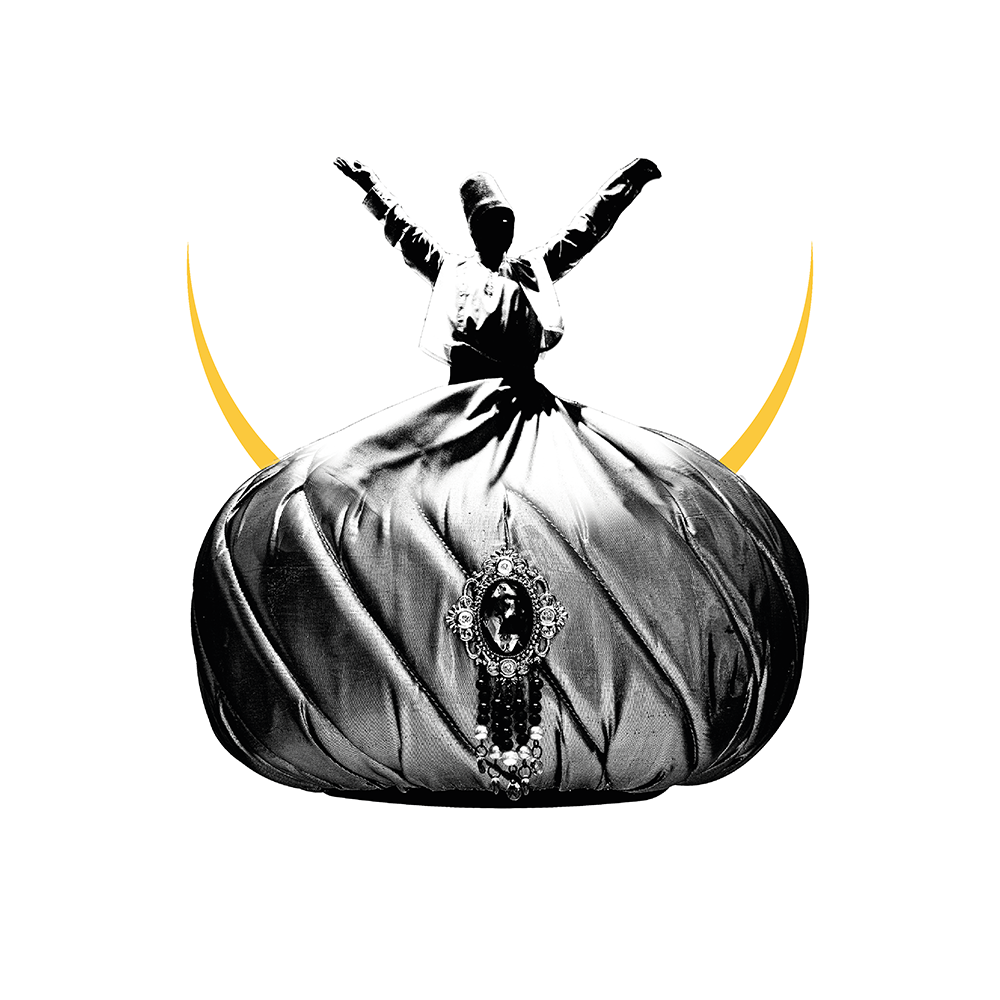
Through the Political Sufism
Ottoman "Darkness"
Lasted Centuries of History
Each Sultan has his own aberrant spiritual inclination.

Jalal al-Din al-Rumi
672 - 604 AH / 1273 - 1207 AD
Mohammed bin Mohammed bin Hussein Al-Balkhi, he was called Jalal al-Din Rumi, the Mawlawyia Tariqah was attributed to him. He was known for his poetry and he had written many books, the most known of them was Masnawi. He had views supporting existentialism; some called them Rumi's ideas of existentialism.
Reference:
Mustafa Ghaleb, Jalal al-Din al-Rumi (Beirut: The Ezzedine Foundation, 1982).
Zinnia Tariqah
It was one of the influential Sufi Tariqahs during one of the intermediate periods of Ottoman history in Anatolia. It was Founded by Zain Al-Din Al-Khawafi (died: 838 AH / 1435 AD), born in Khurasan, and he wrote a number of books, most notably: The Message of the Divine Commandments, the Zennia Wirds, the approach of Rashad, i. e. the right way.
Reference:
Ronnie Ellie Alpha, Encyclopedia of Philosophers (Beirut: Dar al Kotob al ilmiyah, 1991).
Permian Tariqah
It was one of the Sufi Tariqahs that appeared in Anatolia during the period of general unrest in 804 AH / 1402 AD, while Tamerlane invaded and overthrow the Ottomans for a period of time. It was founded by Haji Bayram (died: 833 AH / 1430 AD) near Ankara. As during he was calling for his Tariqah, the state questioned him. Therefore, he was asked to appear before Murad II, who pardoned him after he reassured that his call and his Tariqah. As well as some of Perm's students were exempted from taxes by Murad II to help him expanding the Tariqah. His followers were divided into two groups: The first one preserved Sunni Islam through Sufism, and among the Sheikhs of this group was Aqa Shams al-Din, the professor of Muhammad al-Fatih and his closest Sheikh, and the second group radicalized its views that were closest to Shiism and unity of existence.
Reference:
Khalil Inalcik, History of the Ottoman State (Beirut: Dar al-Madar al-Islami, 2002).
Naqshbandi Tariqah
It came out of Central Asia and moved to Anatolia in the late fifteenth Georgian century. It is affiliated with Muhammad Bahaa al-Din Naqshband. It entered into Anatolia in two times, first one was through one of Bukhara Sheikhs, and then the second one according to the radical Indian Tariqah. It is one of the closest Sufi Tariqahs to the beliefs of Ahlu Sunna Wal Jama'a, i. e. the Sunnis; since its followers are among the most devoted Sufis to preserve the religious duties of prayer and fasting, unlike some other Sufi Tariqahs.
Reference:
Bernard Lewis, Istanbul and the Islamic Caliphate Civilization, translated by: Sayed Radwan, 2nd edition (Riyadh: Saudi Publishing House, 1982).
Khuluthiyya Tariqah
It was founded by Akhiy Youssef Al-khuluthi in the late thirteenth Georgian century. It was one of the Tariqahs that were preserving the appearances of Sunnis, like some other Tariqahs.
Reference:
Muhammad Cobrieli, the Establishment of the Ottoman State, translated by: Ahmed Al-Saeed (Cairo: Dar AlKatib Al Arabi, 1967).
Al-Jarrahia Tariqah
It was called Helvetia, and It was said that it branched off from khuluthiyya Tariqah. It was founded by Nur al-Din al-Jarahi (1133 - 1089 AH / 1721 - 1678 AD) in Anatolia, in addition to that it is one of the most widespread Sufi Tariqahs in the West Counties.
Reference:
Aziz Idrissi, Sufism in the United States of America (Beirut: Dar al Kotob al ilmiyah, 2013).
By deception, they invoked Islamic symbols to justify their deviations.



1) Ahmed Shemshergl, History of Bani Othman, translated by: Mahtab Muhammad (Abu Dhabi: Thaqafa for Publishing and Distribution, 2016).
2) Bernard Lewis, Istanbul and the Islamic Caliphate Civilization, translated by: Sayed Radwan, 2nd edition (Riyadh: Saudi Publishing House, 1982).
3) Hanan El-Maabadi, Sufism and its Effects in Turkey during the Ottoman Era – Presentation and criticism (PhD thesis, Umm Al-Qura University, Makkah Al-Mukarramah, 1429 AH).
4) Mustafa Armgan, The Secret History of the Ottoman Empire, translated by: Mustafa Hamza (Beirut: Arab Science House Publishers, 2014).

